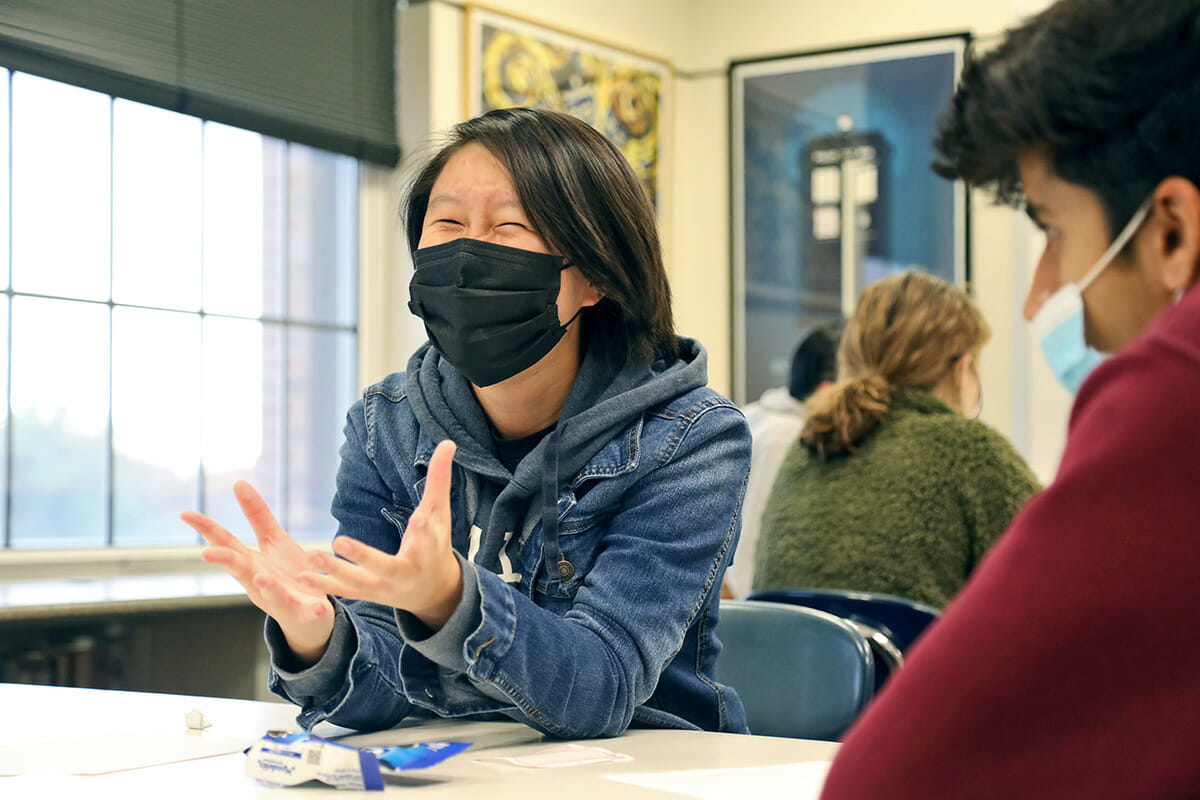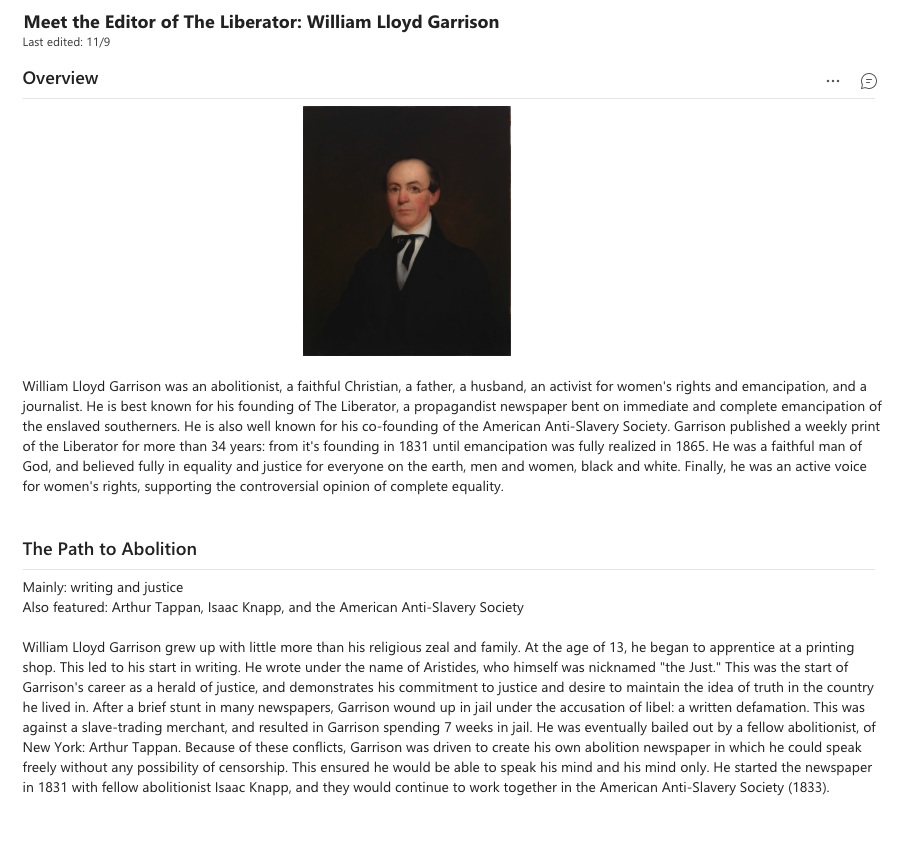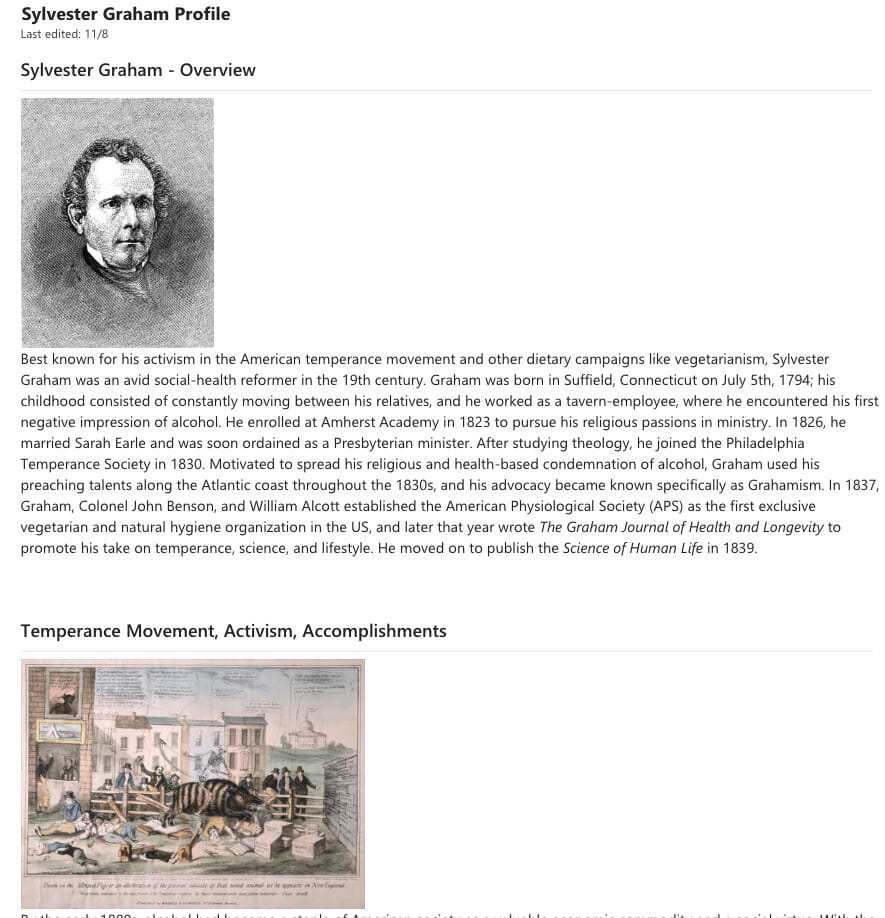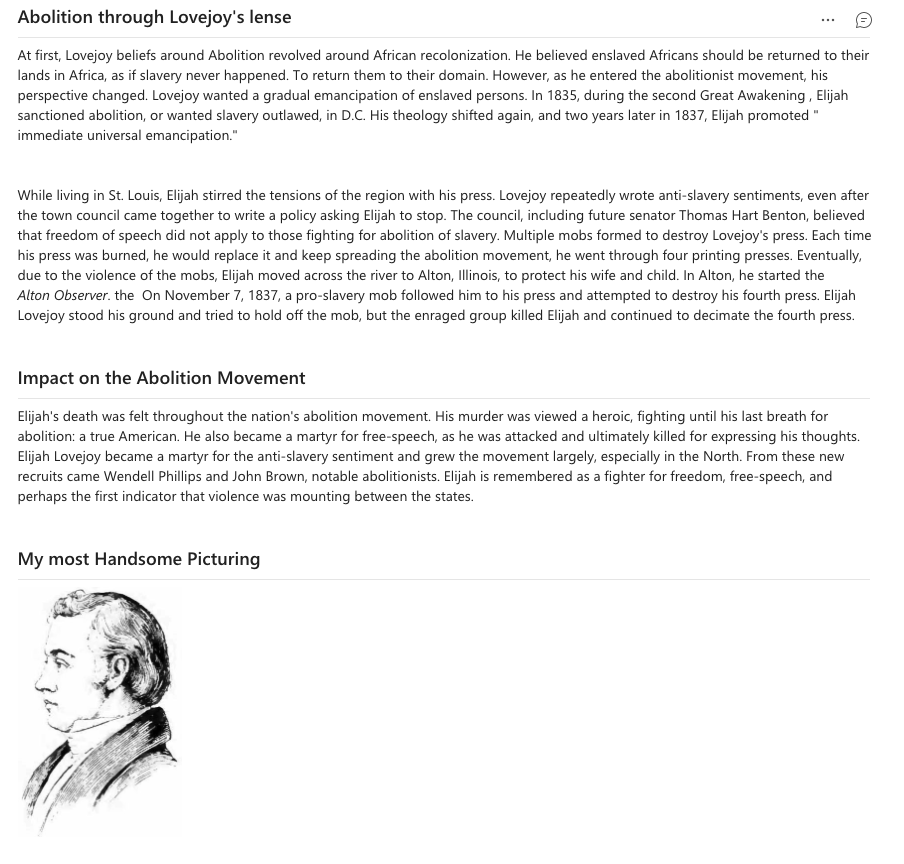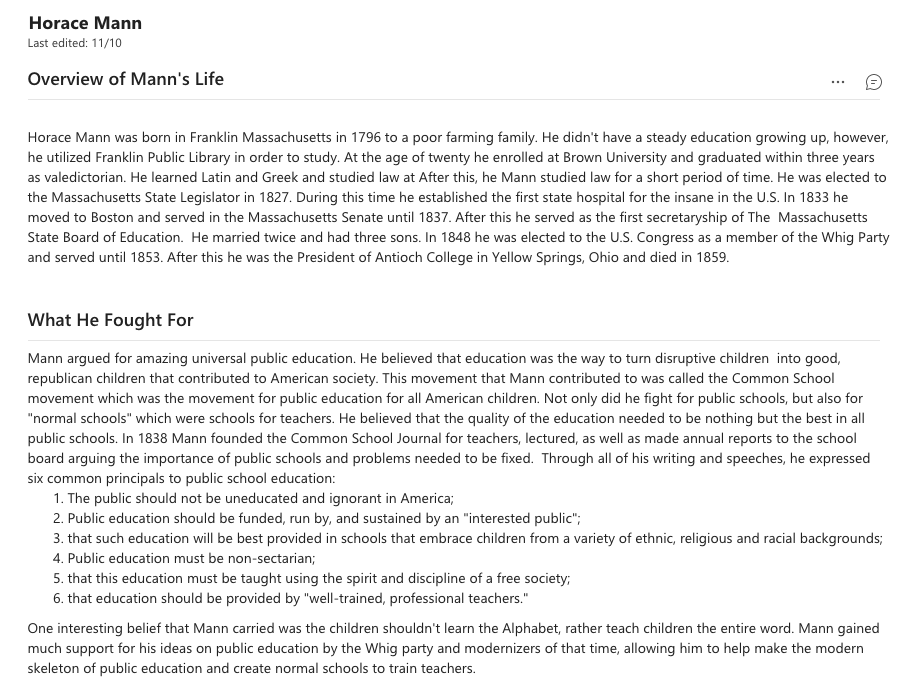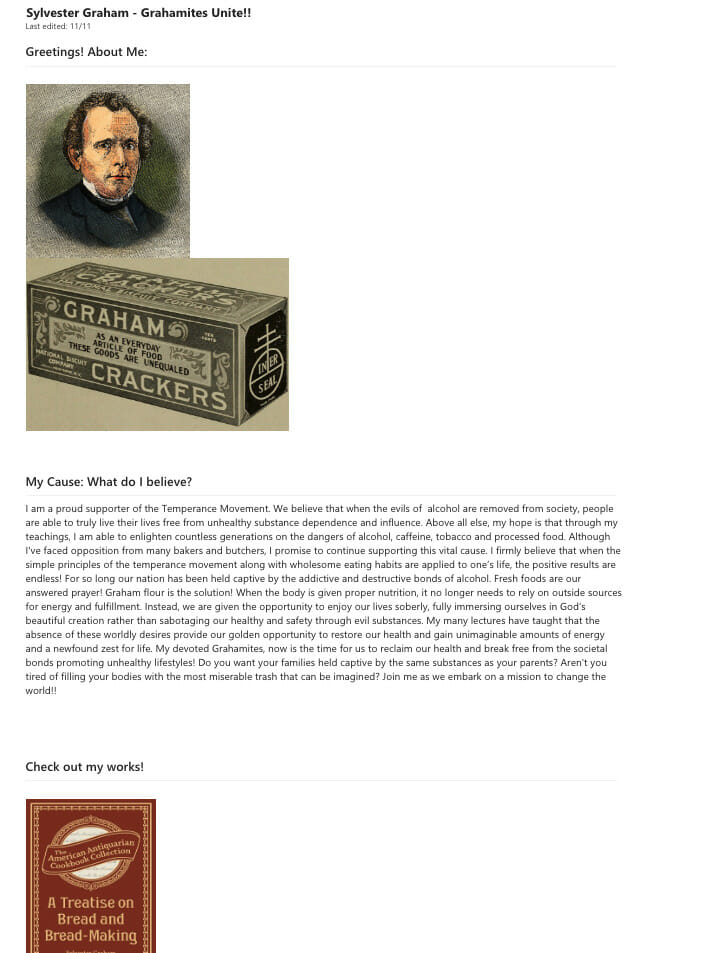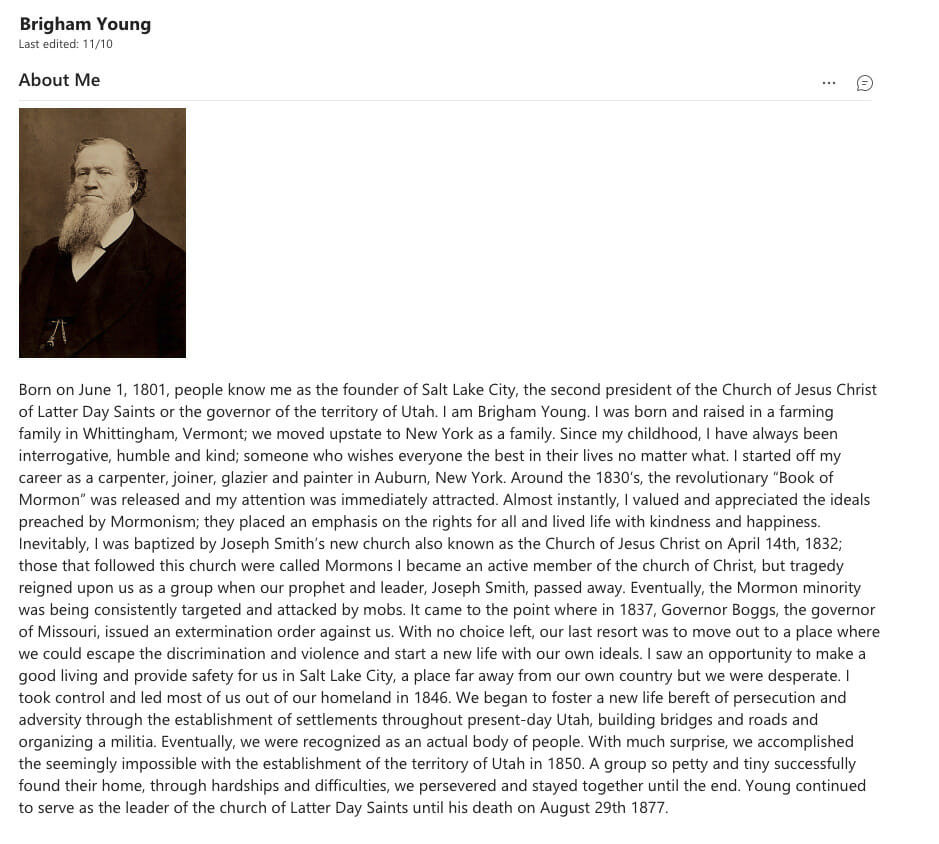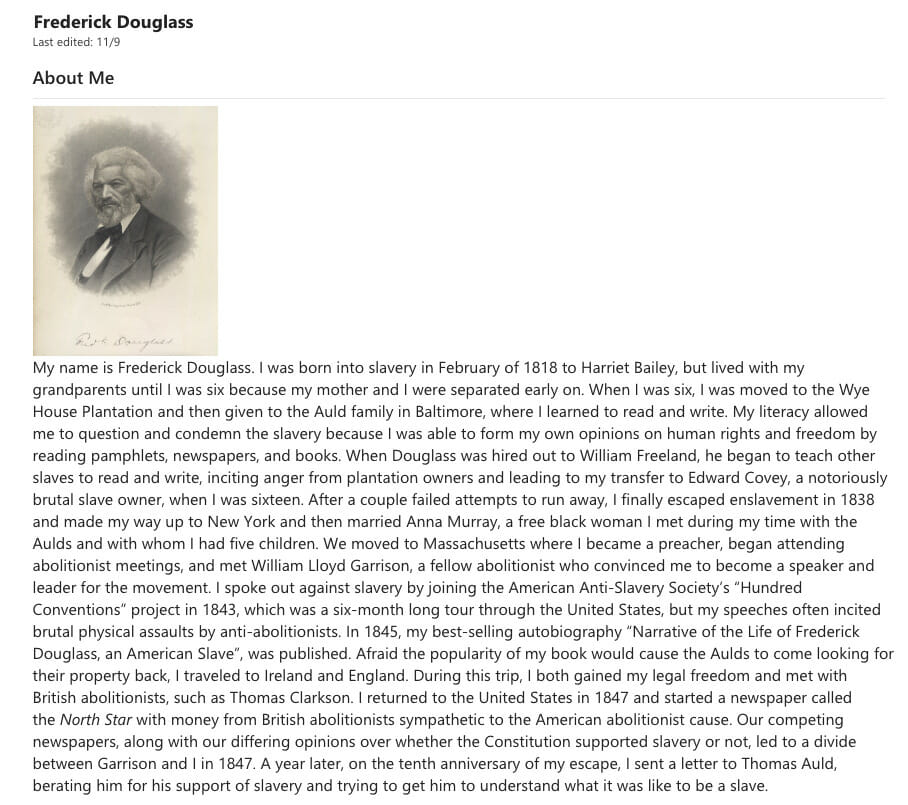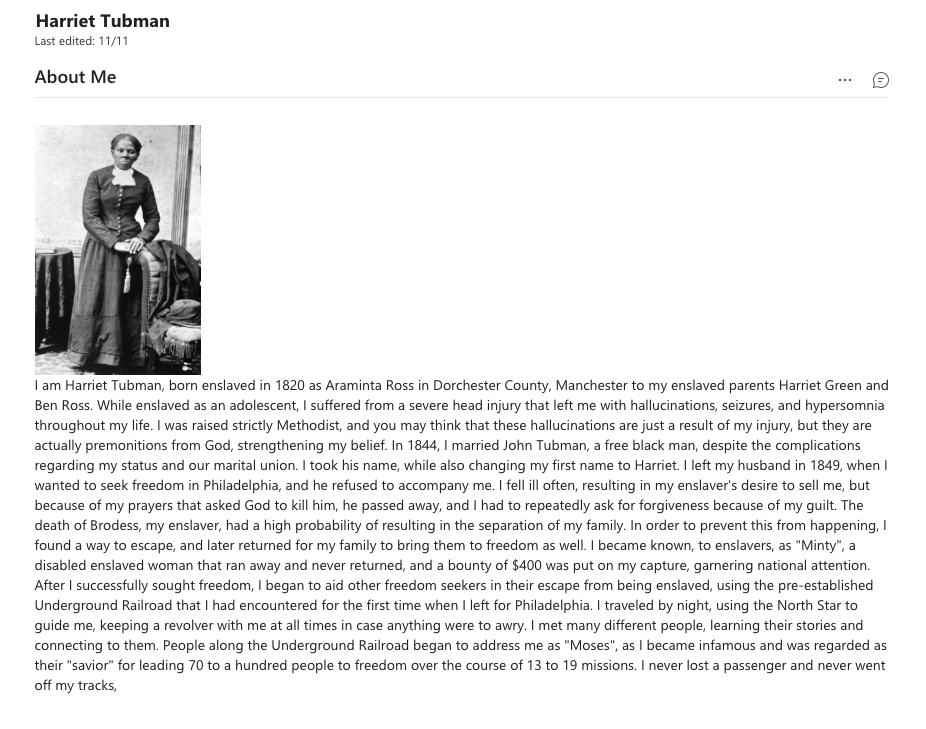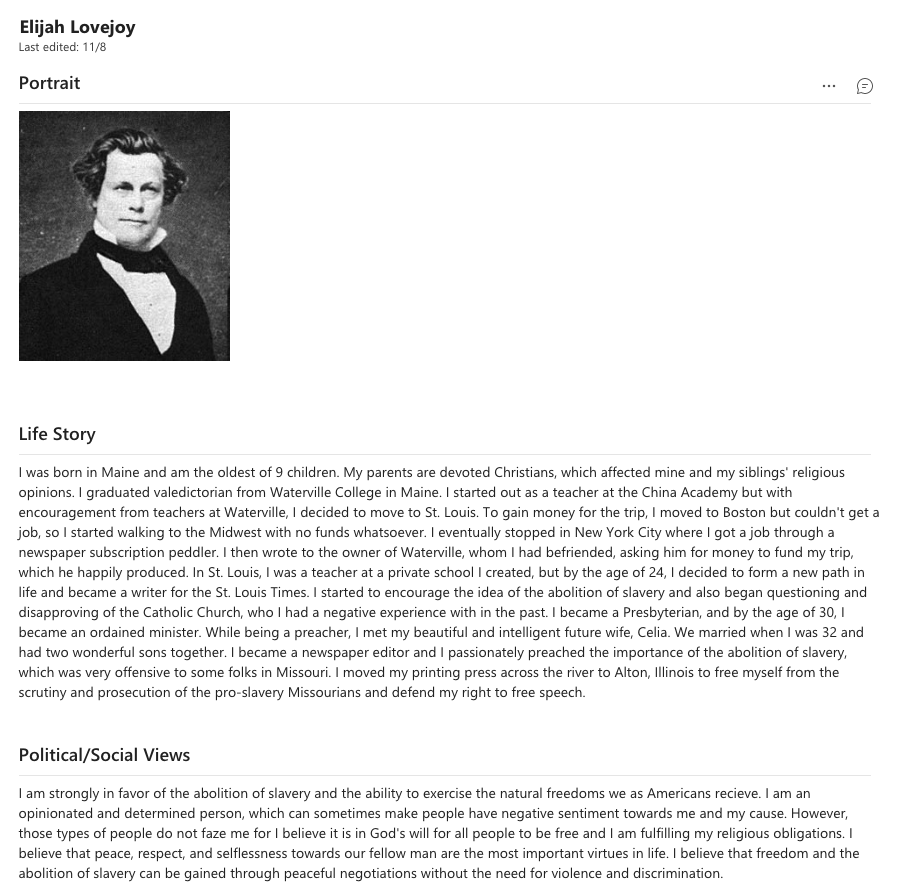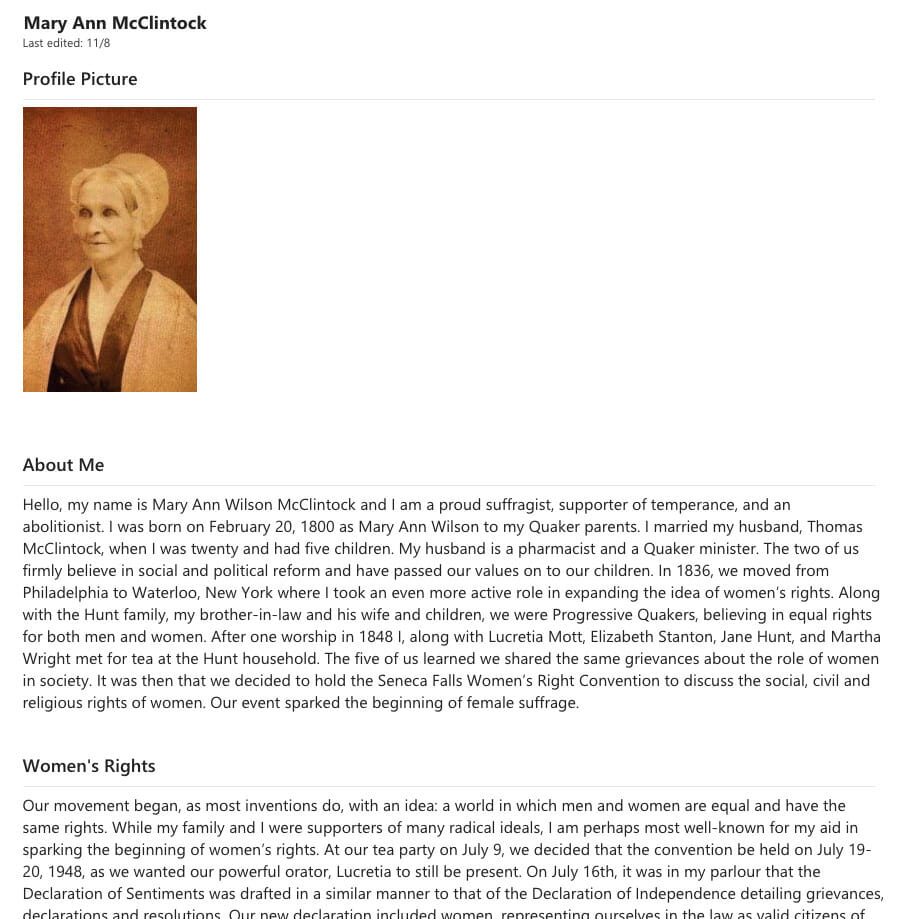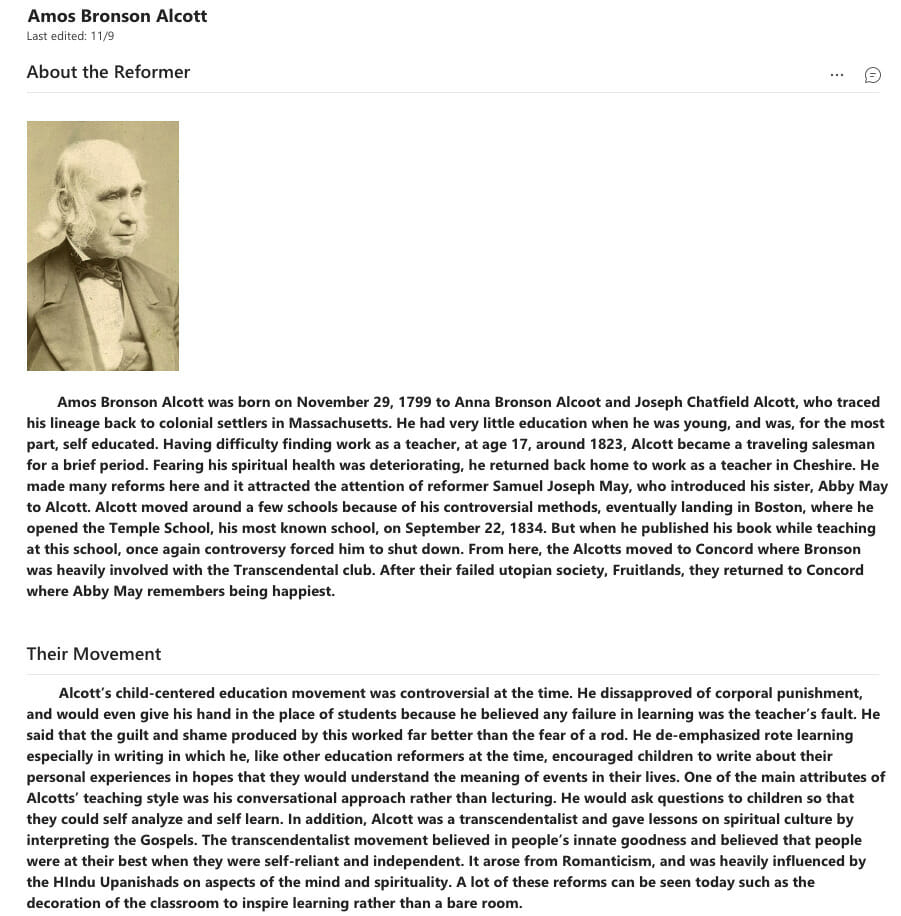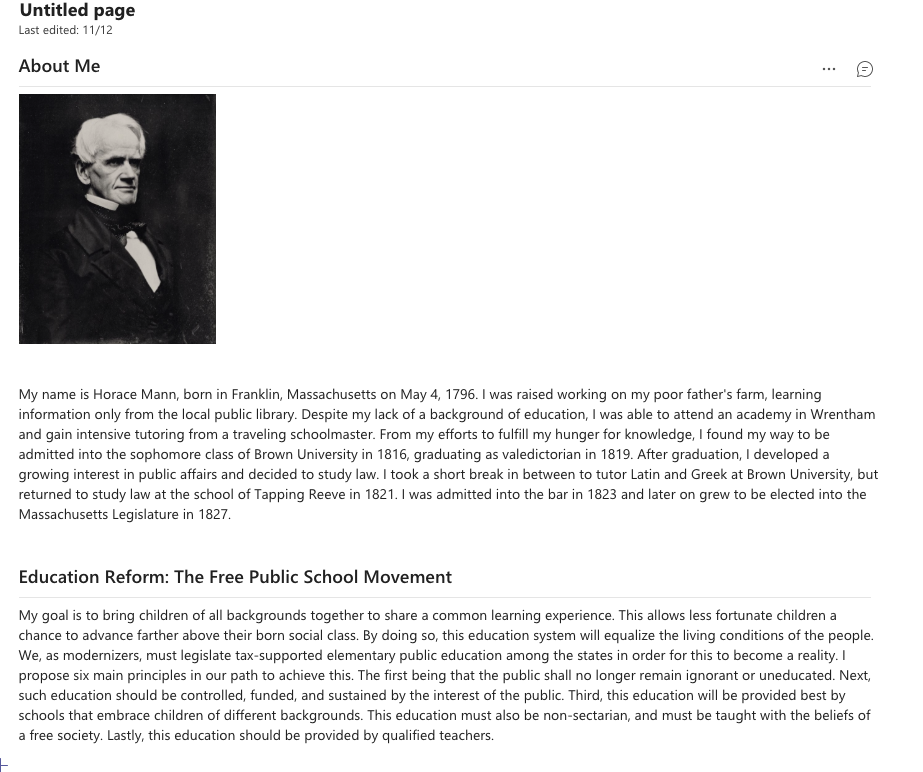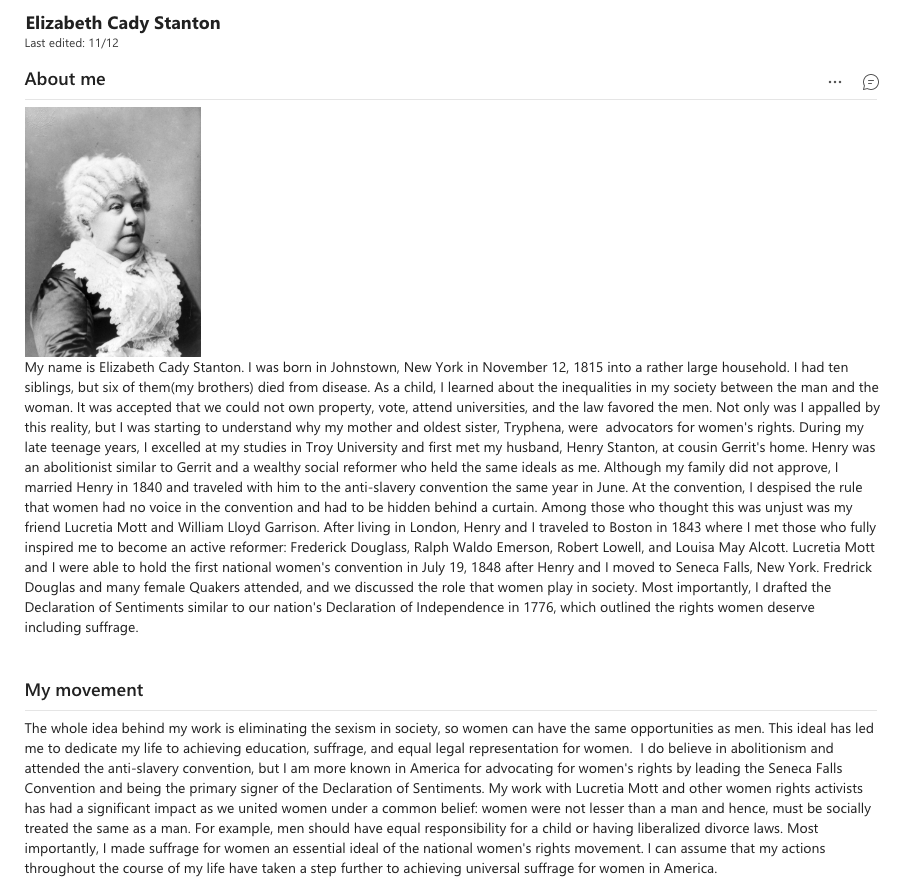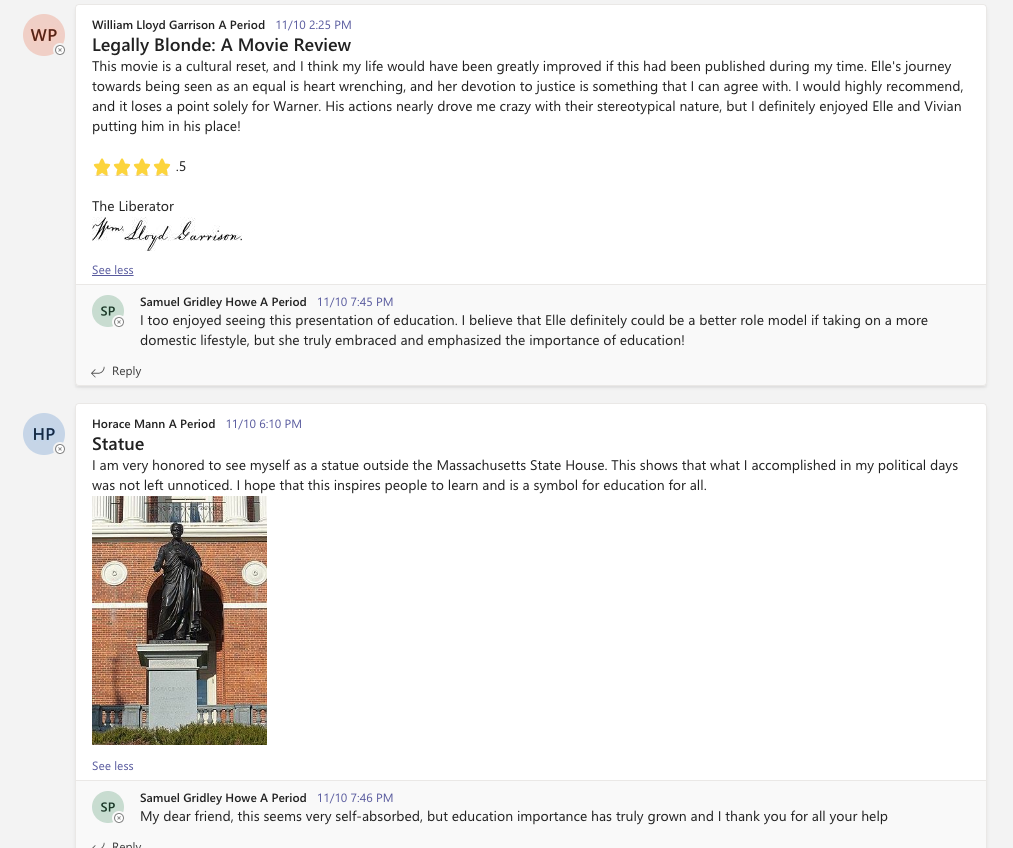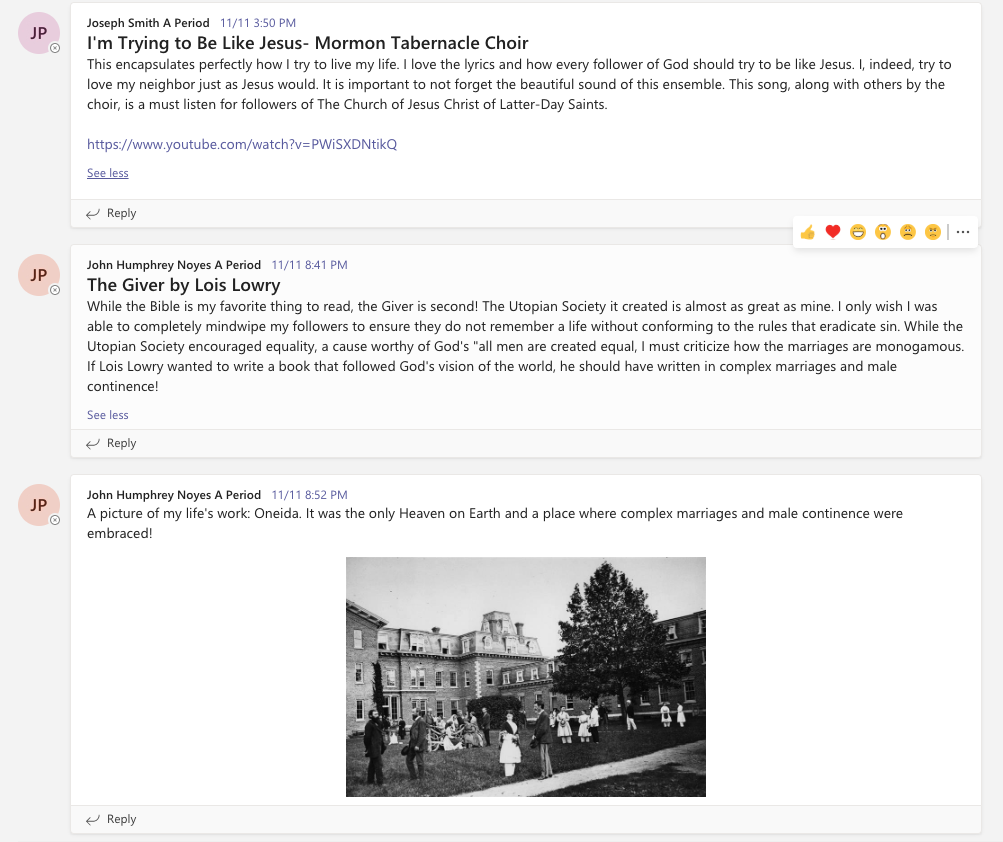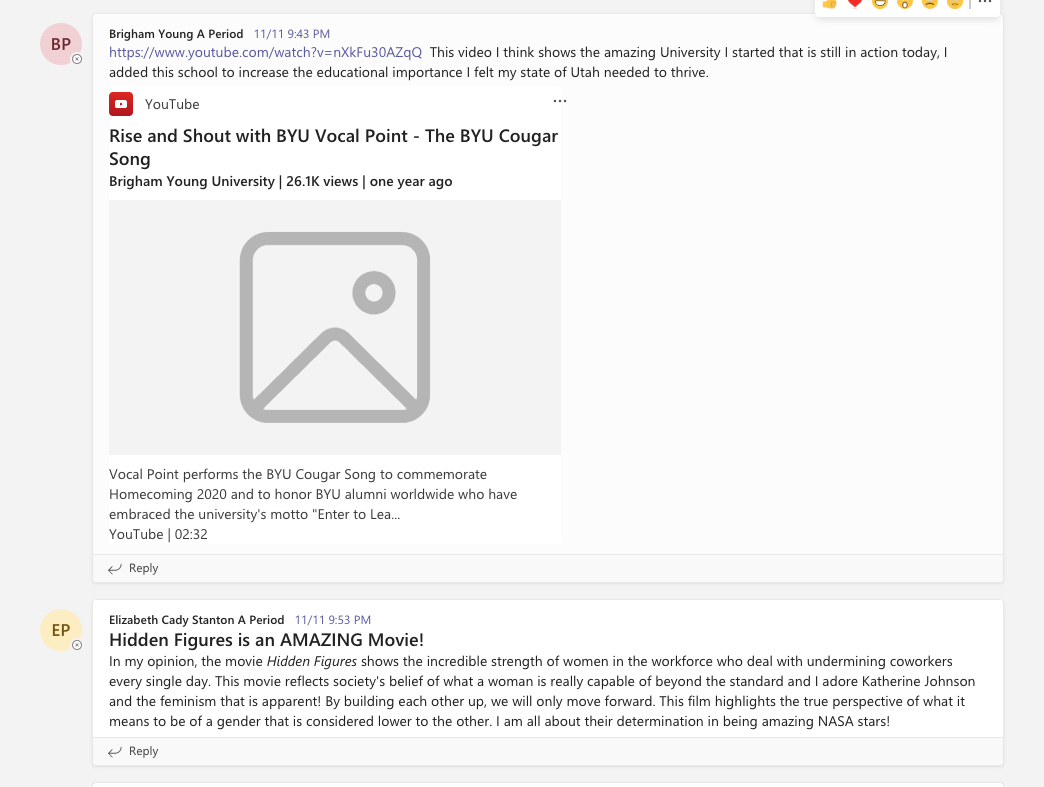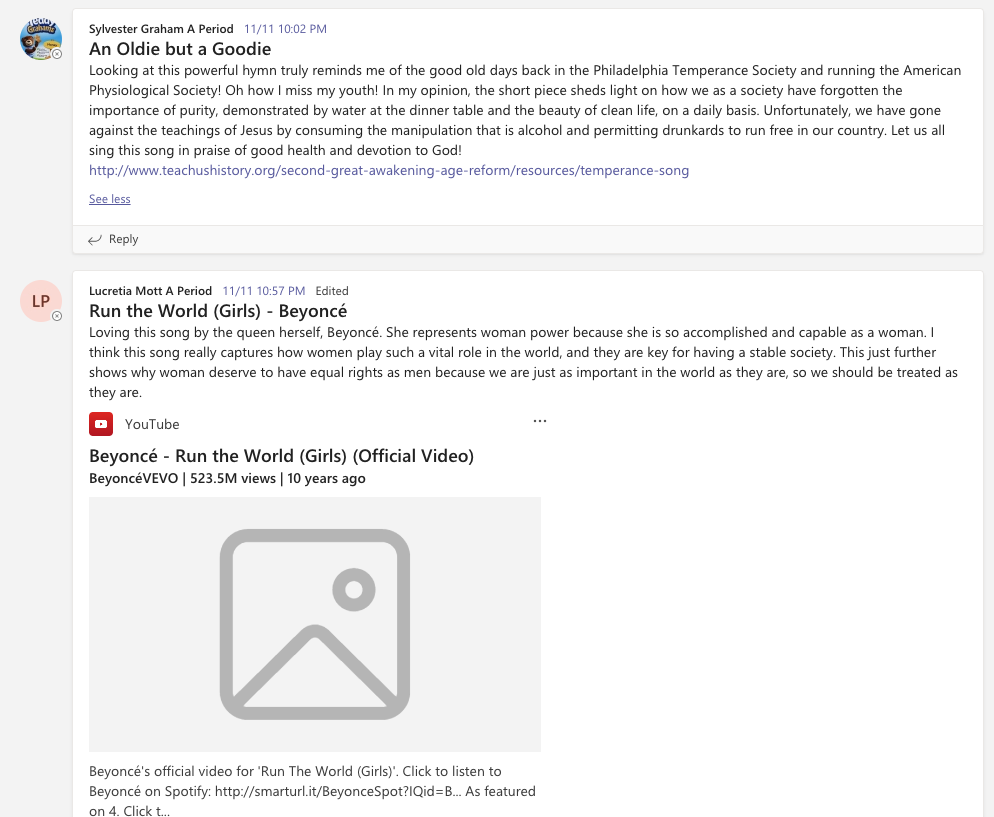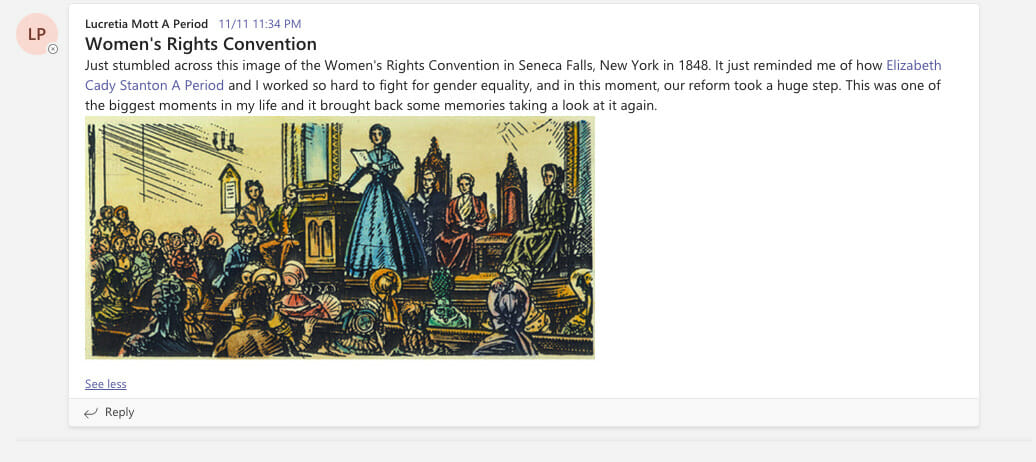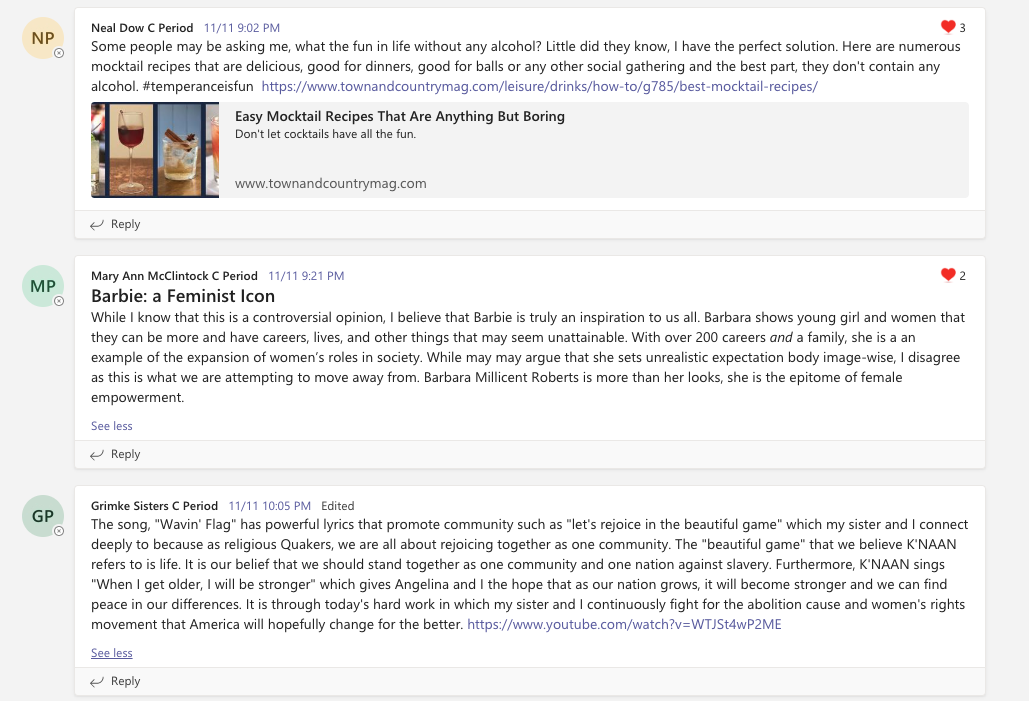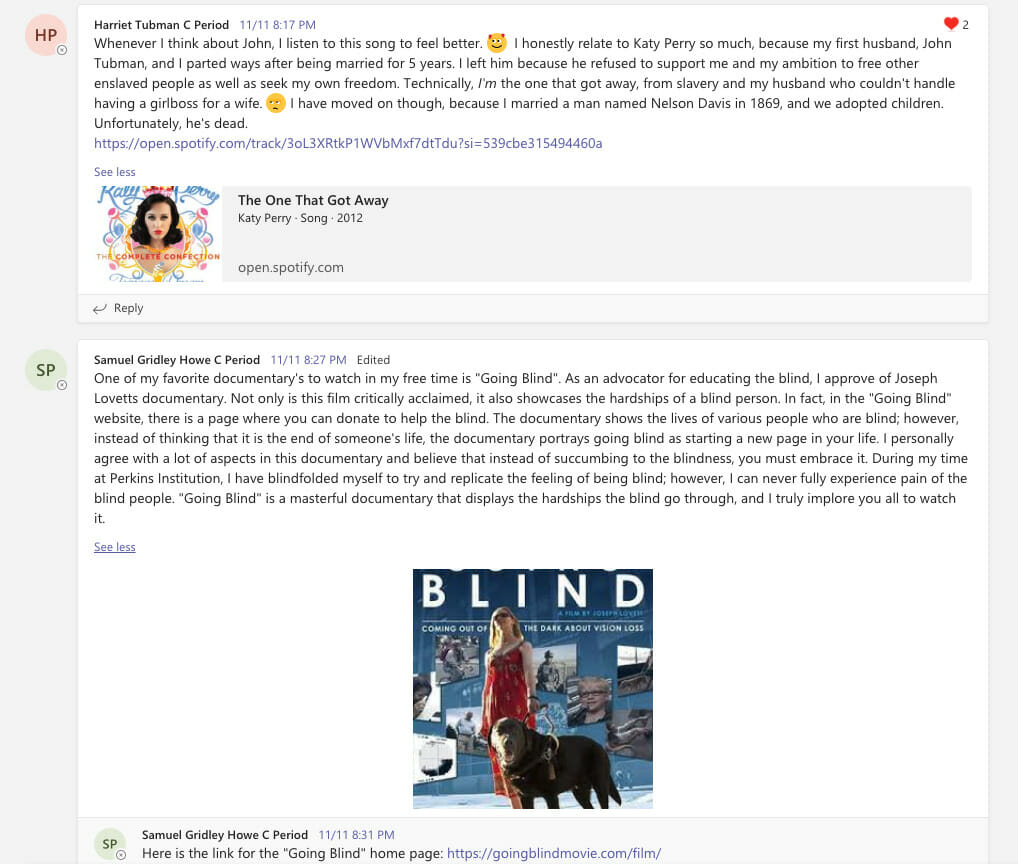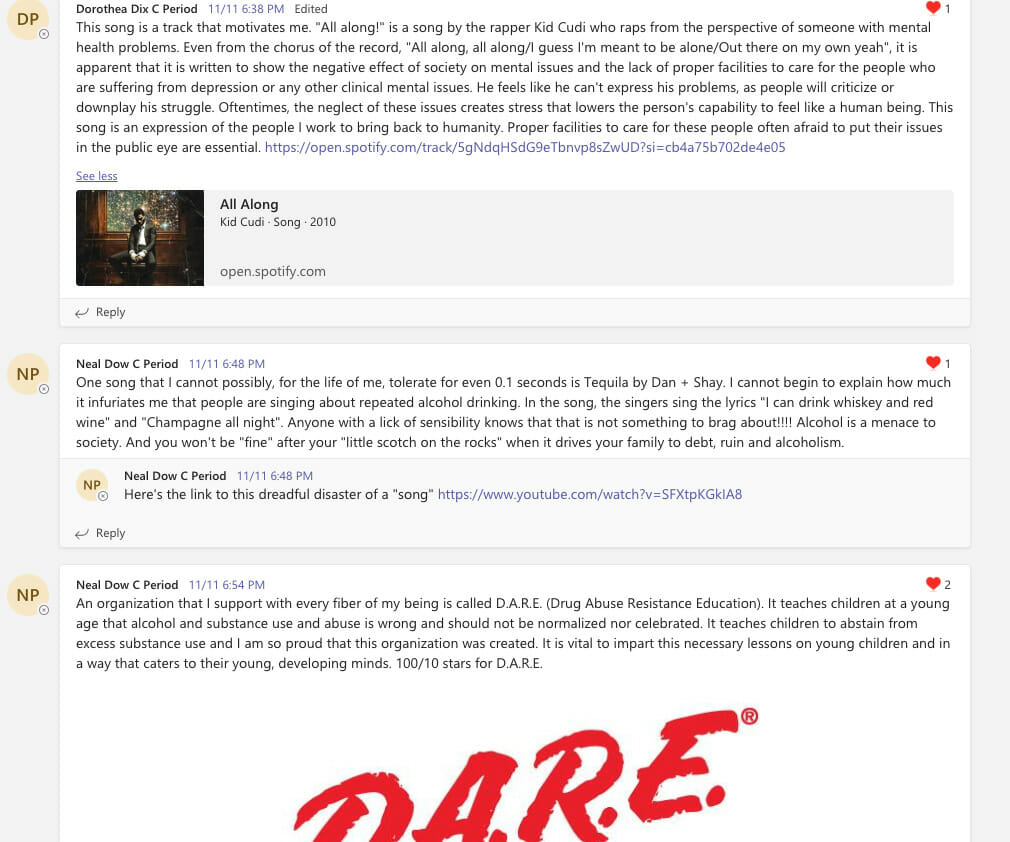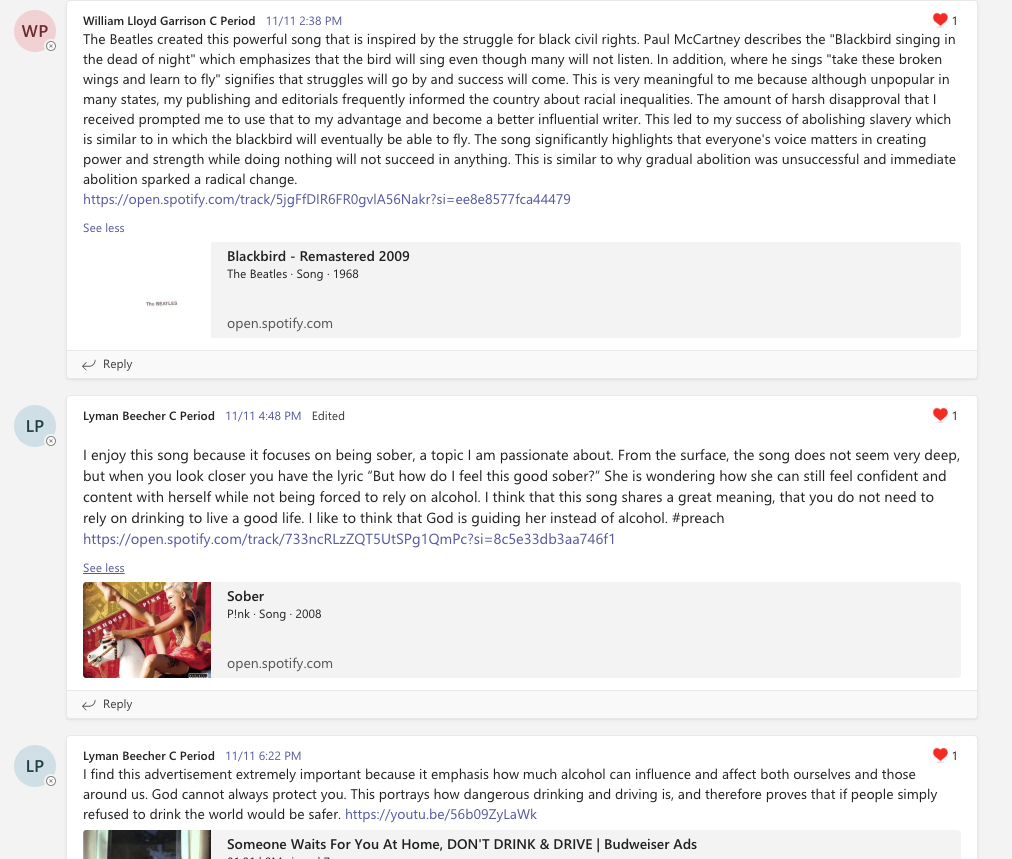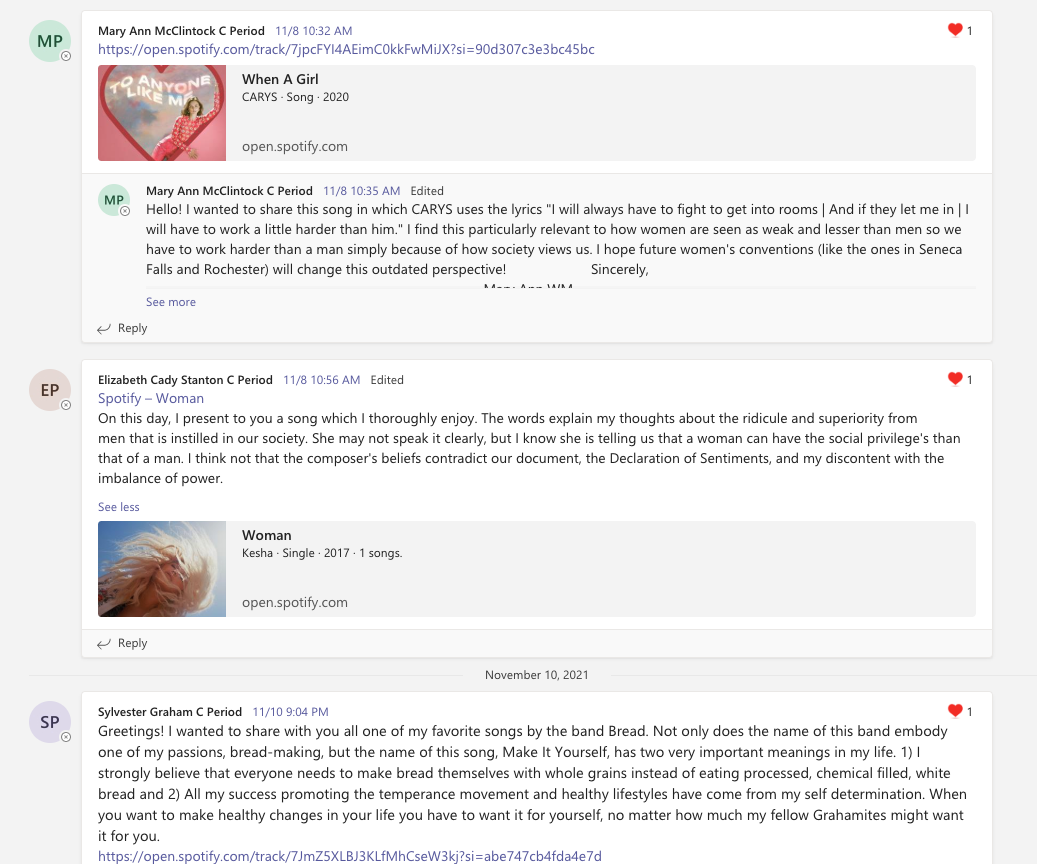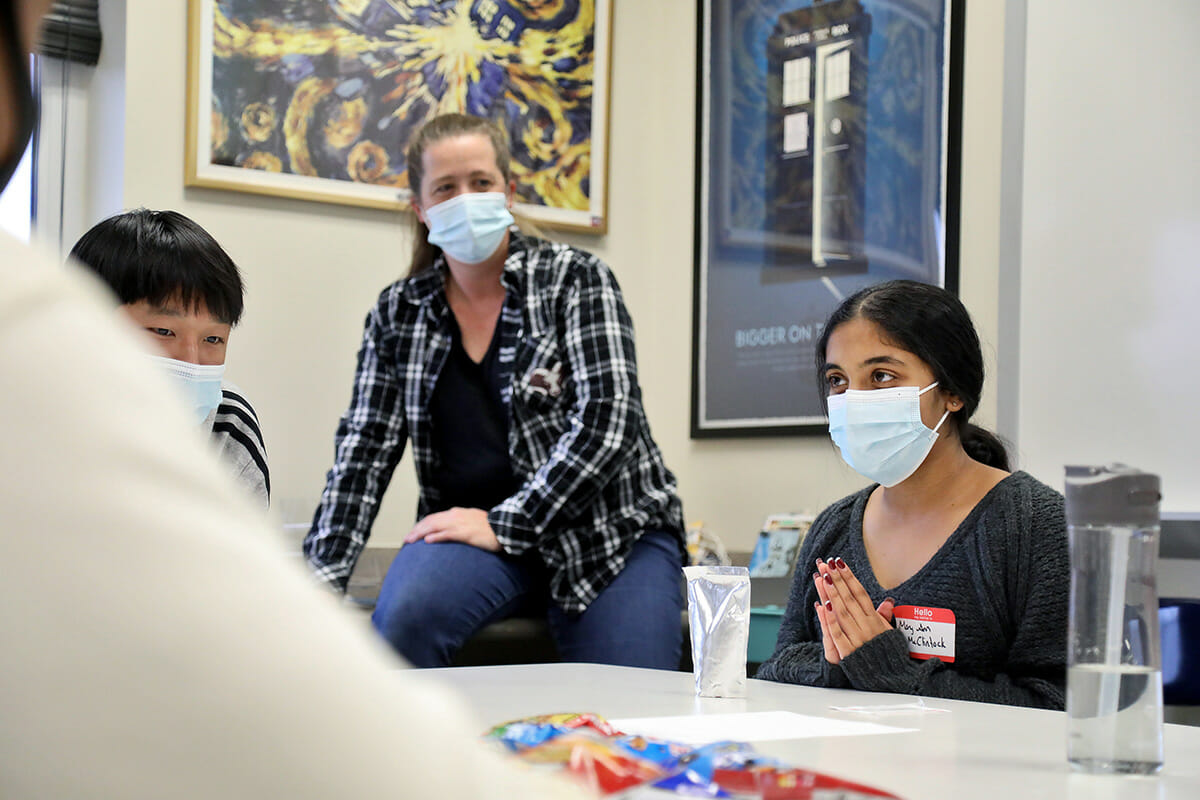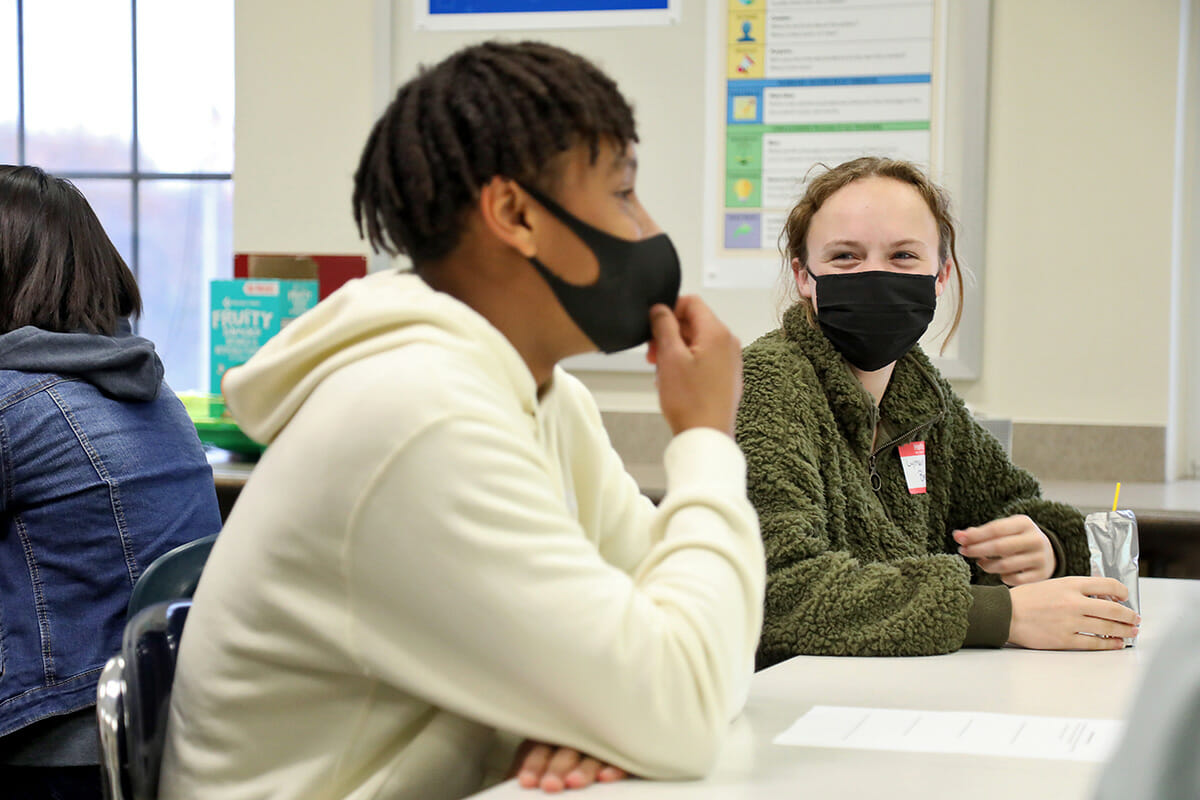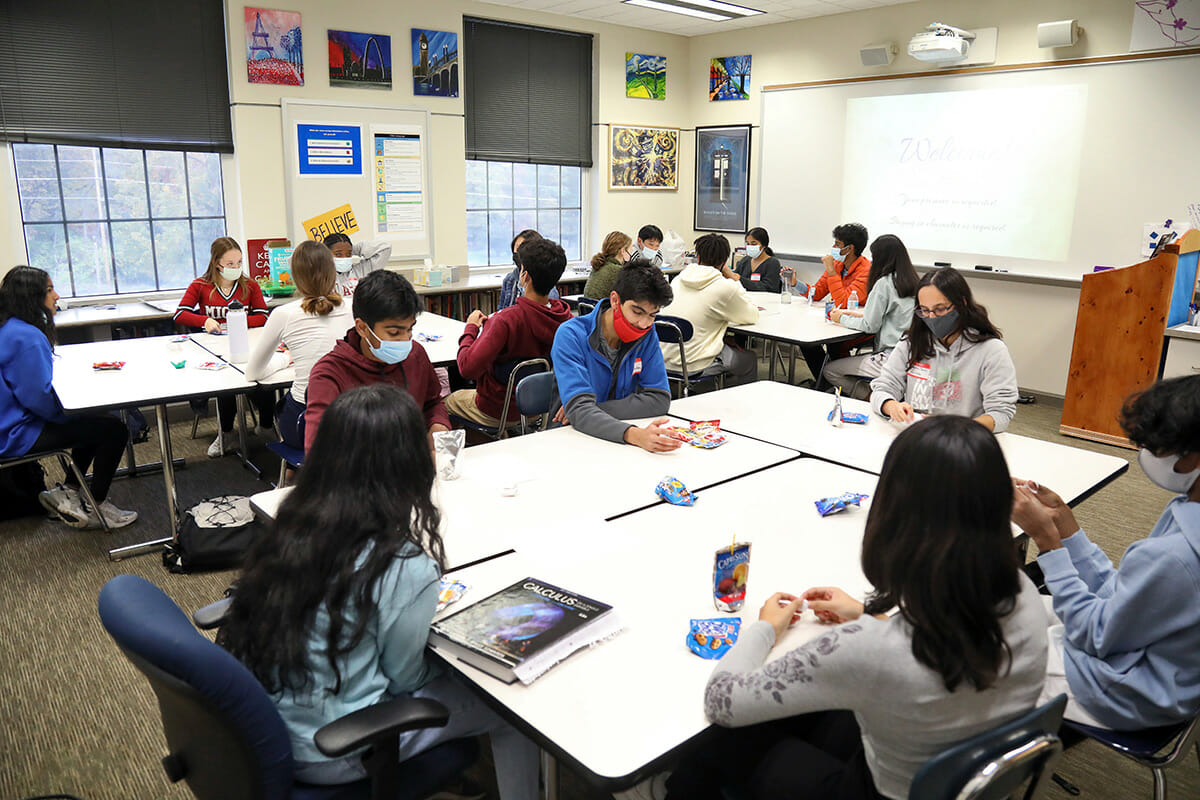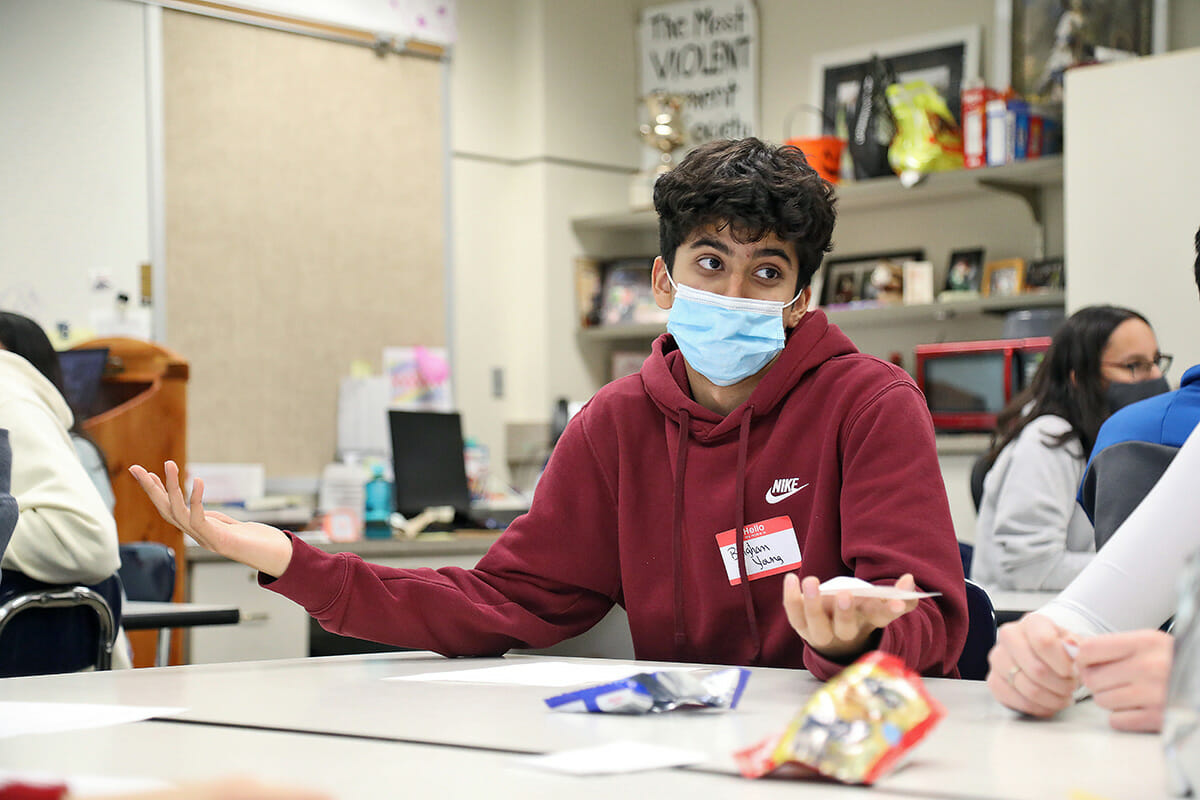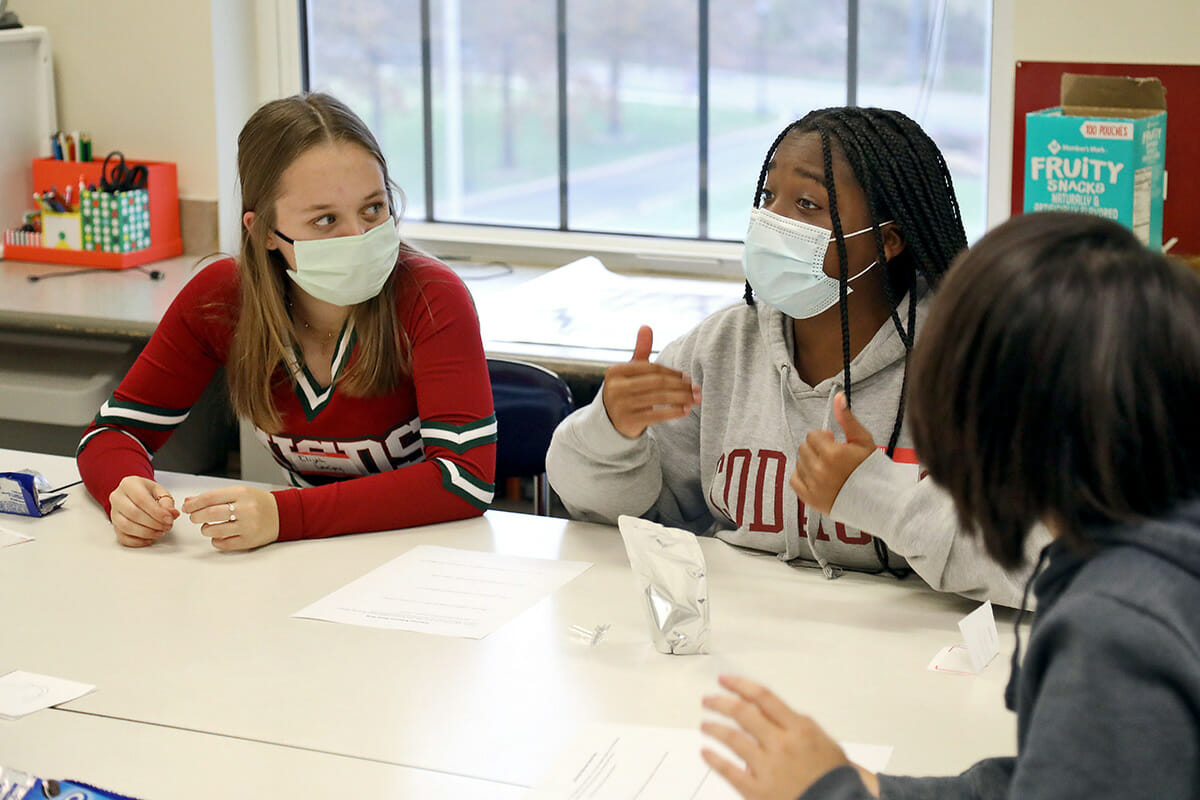In the early- to mid-19th century, Americans from all walks of life began grappling with the state of the nation. The Second Great Awakening inspired some, others were motivated by lived experiences or observations. But, no matter how they started, no matter what they fought for, these activists all worked to make the nation a better version of itself.
In 10th grade Accelerated History, students were asked to think about change agents from that period and ponder the question, “What responsibility do you have to change the world?” Students then chose a key activist and their respective reform movement from that era, diving deep to understand their motivations and how that movement affected the young United States up to 1850. The reformers were chosen from five different areas: Education, Women, Abolition, Utopian, and Temperance, and included notable names such as Horace Mann, Dorothea Dix, Harriet Tubman, Brigham Young, and Frederick Douglass.
As students ventured into researching their activists, they discovered that the activists were involved in more than one movement in some cases, so they needed to investigate additional sources to determine where to place their focus. After the 10th-graders crafted their activist profiles and reform movement principles, they wrote in the voice/character of the activist using the guidance of questions such as, “How did people talk back then? How would the activist speak about these issues? What words would they use?” Students approached the writing of the movement principles from these core questions:
- What criticisms of American society did the individual have?
- What methods did the person use to improve American life?
- What successes/failures did the individual have in promoting reform?
- What were the central beliefs of the individual?
- How influential was the activist during their lifetime?
- What influences in early life led the individual to be an activist?
With the help of Technology Support Specialist Kevin Collier, Upper School History Teacher Tanya Roth created a “closed” social network on Microsoft Teams for the activists to share their profiles and connect with other activists just like social media users do today.
After posting the reformer’s profile picture and bio, students could embellish the profile with additional photos and links to music or video that best captures the activist’s personality and movement aesthetic. In the “news feed” channel, students engaged with content from other activists and shared whether they agreed or disagreed with that activist’s position and commented on how that activist’s contribution was working to better the United States. For example, when a post from Harriet Tubman connected her work to the words of a Katy Perry song, it provided a fun twist to learning history and added context to its meaning.
Roth shared, “This unit provides students with another way to do research, without the pressure of writing a paper. They take what they’re learning in the process and communicate it with fairly general guidelines. Taking on the persona of someone else gives them a whole new take on history. And then they remember it better, too!”
Collier added, “My job is to help teachers create unique learning experiences for students. Using Microsoft Teams for this unit enabled students to drive their own learning in a more immersive and creative way. Being able to leverage technology to meet students where they are can be really powerful. And, when the Microsoft Education team gets excited about it, we know we’re on to something good!”
Students reflected on the process and shared their thoughts:
“The project was incredibly unique, immersive, and creative. I gave a creative voice to Harriet Tubman, exploring her as a person and reformer. In other history projects, I often can’t make personal connections, but this project did an effective job of connecting me to my own assigned reformer and other reformers reenacted by my peers. It required more extensive research compared to research I had done in my previous history classes, which definitely proved to be challenging. However, I enjoyed searching for music, and other media Harriet Tubman would have characteristically listened to or watched. It was entertaining and fun to interact with others’ posts and see their creative choices.” – Haya Hussein ’24
“I really enjoyed the creative liberties we were allowed to take to convey the persona of our characters. I thought the part where we tried to write in old American English for our blog posts was fun because I got to integrate words such as ‘kinsman’ and ‘folks’ in my writing. I also liked talking with other people, trying to emulate our reformers and act as we believe they would have acted at the time.” – Mia Krieger ’24
“I enjoyed being able to really delve deep and learn about all of the nuances of the different areas in reform, seeing what led certain reformers to take the course of action that they did and learning about why they were so passionate about reforming their respective areas.” – Ibrahim Elnour ’24
“One thing I enjoyed about the project was learning so much about my reformer that I was able to ‘become’ my person in an in-class debate. However, becoming my person was also one of the most difficult parts because it is hard to know exactly what they thought and how they acted.” – Maggie Johnson ’23
Students closed the unit with a “Reformers Dinner Party,” where they all came together and carried on small dinner conversations with their fellow activists, challenging each movement’s ideals and making new allies in working towards reform. What an engaging way to step into the shoes of activists from another era!
